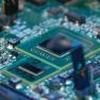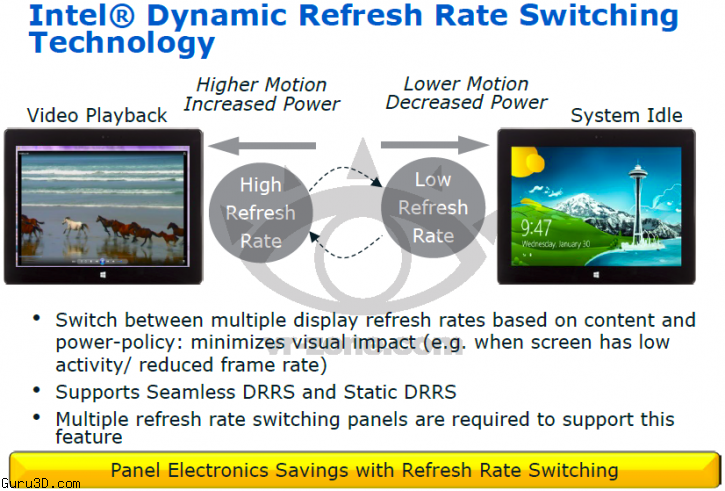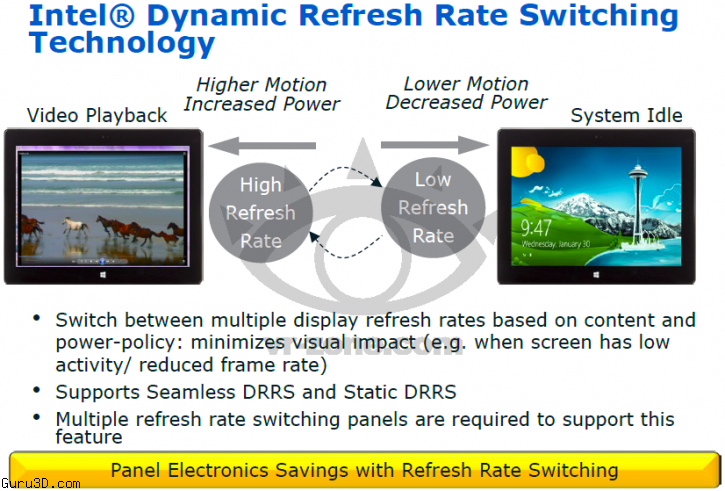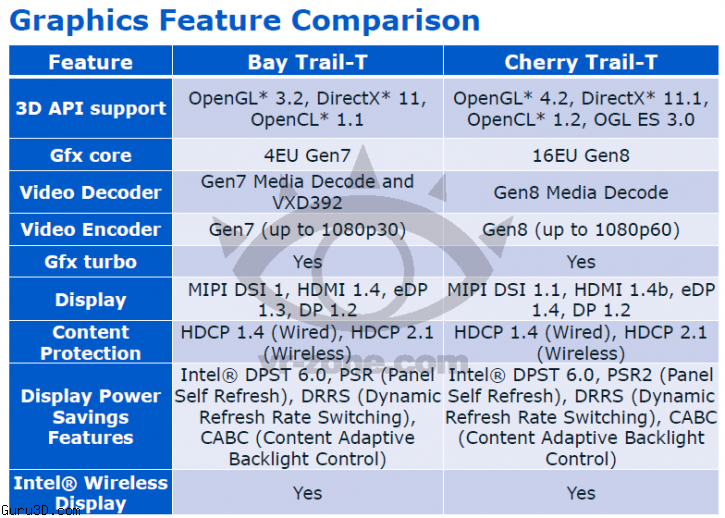Details leaked about the new graphics features of Intel's future "Cherry Trail" Atom SoC, with a focus on efforts to extend battery life by lowering power consumption on the upcoming SoC. Cherry Trail and Bay Trail is Intel’s low power cousin to the Core series and is positioned to compete head on with ARM, and, of course AMD’s mobile offerings (though the focus will be on ARM due to market share). The SoC will appear under the Atom brand on desktop, tablet and smartphone platforms.
As Vr-Zone reports:
Most of Cherry Trail’s GPU upgrades will likely go unnoticed by the user, with the exception of the improved battery life should Intel’s claims on paper hold up to real world scenarios. Of course optimized operating systems and top quality builds by device manufacturers could help to change that.
Intel’s power saving efforts with Cherry Trail are broken down into three features: backlight reduction, refresh rate switching and panel self refresh.
Intel’s first power saving feature with Cherry Trail is arguably the simplest: backlight reduction. A backlight on a mobile device is arguably one of the more power-intensive parts of the system. For the most part reducing the intensity of the backlight will do enough to squeeze some extra battery time out of a system, but that comes at a cost — loss of image quality. Intel is promising that with its new image enhancement technology, backlight reduction will no longer result in such substantial drops in image quality.
CTT GFX4 First look at new features on Cherry Trails GPU
Next up is dynamic refresh rate switching. Dynamic refresh rate switching has long been in the works, first appearing as a technical paper in 2007, making an appearance in a corporate white paper in 2010, and finally materializing in Cherry Trail. The process works by having the system switch automatically between high and low refresh rates depending on the content the system is displaying. Video playback, for instance, would get a high refresh rate yet idling displaying the desktop would result in a low refresh rate. While this mode requires a panel that supports multiple refresh rate switching, the potential for power savings is there because of the increased efficiency.
CTT GFX5 First look at new features on Cherry Trails GPU
This leads to panel self refresh. With this feature the system shuts down the video processor when static images are being displayed. In addition, not copying images from the SDRAM to the power buffer leads to additional power savings. This should increase the system battery life idle mode.
CTT GFX51 First look at new features on Cherry Trails GPU
One of the other interesting features that Intel is including with Cherry Trail is called graphics dynamic frequency and power sharing. This function gives a performance boost to graphics intensive applications in what Intel calls an “intelligent” fashion, that is when only the power and thermal headroom exist. At the same time, this sounds somewhat like the boost modes found in Samsung’s smartphones which triggered Antutu-gate.
CTT GFX7 First look at new features on Cherry Trails GPU
API and codec support
Cherry Trail’s GPU API support will be expanded over Bay Trail, with support for new versions of every major API. Open GL 4.2, Direct X 11.1, OpenCL 1.2, OGL ES 3.0 will all be supported, but it’s not known of the same support for these APIs, with the obvious exception of Direct X, will exist on Android. Bay Trail has limited API support on Android, and it isn’t clear that Cherry Trail will be much better.
CTT GFX11 First look at new features on Cherry Trails GPU
For codecs, Intel promises that Cherry Trail will have enhanced support for VP8 which is what Google uses for Google Hangout and YouTube. Cherry Trail will support the usual collection of codecs for hardware accelerated decoding, and will support hardware encoding of H.264 and VP8.
Pipes of plenty?
Aside from power savings and enhanced API support, one of the other important features to note is the increase in shaders. This is one of the few new GPU features that may actually be noticed by the user, particularly in benchmarking. For Cherry Trail, Intel is providing four times the amount shaders from 4EU to 16EU. This means an even bigger portion of the die is dedicated to the GPU, which will no doubt give it a big performance boost compared to the competition.
CTT GFX2 First look at new features on Cherry Trails GPU
VR-Zone hasn’t seen any information yet on Cherry Trail’s GPU clock speed nor any benchmarks. It could be that Cherry Trail offers a big performance boost over Bay Trail, if the device and OS is properly optimized. At the same time, it could be that the upgrades go unnoticed because of sloppy coding and second-tier build quality.
While everything Intel is promising sounds promising, Bay Trail was stymied by lack of hardware wins. Cherry Trail needs some manufacturers to sign on in order to go anywhere, and the mobile SoC market in 2014 will be fierce and crowded.
Intel Cherry Trail’s GPU (Atom) Details leak





